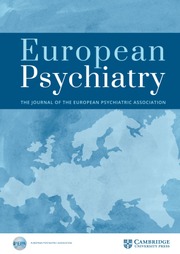No CrossRef data available.
Article contents
Cortical and Sub–cortical Volumetric Abnormalities in Bipolar Disorder
Published online by Cambridge University Press: 23 March 2020
Abstract
Previous MRI studies of bipolar disorder (BD) are often limited by small sample sizes and heterogeneity exists with regard to neuroimaging markers. To address these limitations, the ENIGMA Bipolar Disorder Working Group collected the largest BD neuroimaging data set ever studied (n = 6,500). Here, we review findings from sub–cortical volume and cortical thickness and area analyses.
ENIGMA harmonized analysis methods were applied to 28 international pooled study samples of MRI data and involved sub–cortical and cortical imaging analyses. We assessed differences between BD and healthy controls (HC) using both mega and meta–analytic multiple linear regression models, adjusting for standard covariates (age, sex, etc.), and correcting for multiple comparisons.
Sub–cortical volume analysis revealed we found consistent volumetric reductions in BD patients for hippocampus and thalamus and enlarged lateral ventricles in patients. In BD, cortical gray matter was thinner in frontal, temporal and parietal regions of both brain hemispheres. BD had large general effects on mean gray matter thickness in both left and right brain hemispheres. Further we found that psychopharmacological treatment showed significant associations with cortical thickness and surface area.
The ENIGMA pipeline allows for identification of brain MRI abnormalities in BD in the largest analysis ever conducted. The results suggest a pattern of brain structure abnormalities, which provide novel insight in pathophysiology of BD, and potential effects of mood stabilizing agents.
Received speaker's honorarium from Lundbeck, Lilly, Otsuka
- Type
- Symposium: Dissecting heterogeneity in psychiatric disorders using imaging and genetic markers
- Information
- European Psychiatry , Volume 41 , Issue S1: Abstract of the 25th European Congress of Psychiatry , April 2017 , pp. S44
- Copyright
- Copyright © European Psychiatric Association 2017





Comments
No Comments have been published for this article.